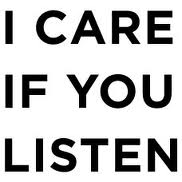I Care If You Listen: Third Coast Percussion Brings Unrestrained Intensity to World Premieres in “Between Breaths”

Published on September 13, 2023
by Forrest Howell | Share this post!
“another fresh and thought-provoking album”
“The highly programmatic and hypnotic new album showcases the quartet’s vision for commissioning works by living composers”
“This display of thrilling precision and thoughtful musicianship permeates the entire project, creating an album that underscores the ensemble’s commitment to exploring relevant aesthetic and social questions.”
Third Coast Percussion’s Between Breaths is another fresh and thought-provoking album in what has been a steady stream of recordings from the Grammy-award winning quartet over the past seven years. Released Sept. 8 on Cedille Records, Between Breaths returns to many themes explored on the ensemble’s debut EP, Ritual Music (2006): relationships between individuals, communities, and ritualistic acts. The highly programmatic and hypnotic new album showcases the quartet’s vision for commissioning works by living composers and features world premiere recordings of works by Missy Mazzoli, Tyondai Braxton, Ayanna Woods, and Gemma Peacocke, and by Third Coast Percussion itself.
Mazzoli’s Millennium Canticles depicts people in a post-apocalyptic world trying to rediscover the stories and rituals of humanity. The narrative arc takes listeners through the initial creation of ritual, the adoption of deity (locusts, in this case), the evolution of ritualistic acts, the creation of dogma, and the inevitable tension between individuals and the impositions of a ritual-centered community. Mazzoli creates this foreboding sonic landscape with wooden slats, metal pipes and cans, hand chimes, and the voices of the quartet. The sheer intensity and abandon in Third Coast Percussion’s performance is especially striking, including aspirated inhalations, chanting, yelling, and crude psalmody. But what is inevitably missing on the recording is the visual element of ritual performance and of percussion playing.
Co-composed by the members of Third Coast Percussion, In Practice also centers on the theme of ritual, but highlights instead how personal rituals can be woven into a group synergy without compromising the integrity of the individual. In Part I, constantly shifting rhythmic patterns from the marimba gradually intensify, as sounds from a Prophet synthesizer, bowed vibraphone, and struck cereal bowls add a sonic background meant to represent the diverse roles of human rituals — from meditative to quotidian. A steady ascension in both pitch and volume bursts into the groovy Part II, which calls for coffee mugs and electric toothbrushes — another nod to the everyday rituals that make up the fabric of our lives. Where Part I is exploratory, with each member of the ensemble responding to the others, Part II is uninhibited and joyous, celebrating the group’s nuanced and powerful synergy.
Braxton’s Sunny X is the only work on the album that uses a fixed electronic track, with experimental timbres that draw heavily from the interplay between electronic and acoustic sounds. Though Third Coast’s execution and precision are impressive, the piece feels like an outlier; listeners might wonder how a non-programmatic piece fits with the more emotionally weighted and conceptually engaging compositions on the album.
Triple Point is Woods’ representation of the curious state of matter in which gas, liquid, and solid can exist simultaneously in thermodynamic equilibrium. The piece maintains a steady groove throughout, repeating short minimalist patterns to create a musical stasis. The overall effect is hypnotic, a sonic parallel to the visual phenomenon of seeing a substance reaching its triple point.
The album closes with Peacocke’s Death Wish, a reflection on her experience hearing the story of the late Hinewirangi Kohu-Morgan, a Maori artist, poet, and activist who was a survivor of sexual assault. The piece is almost monochromatic, using only two marimbas with two players each; and yet, there is an intimacy that is achieved through the piece’s economy of timbre. Tremolos sustain and subtly affect the energy of the piece, while vamps more dramatically shape the contours. Third Coast Percussion’s sensitivity in collaboration shines here, with the players compounding each other’s sonorities to reach the peaks of the piece. This display of thrilling precision and thoughtful musicianship permeates the entire project, creating an album that underscores the ensemble’s commitment to exploring relevant aesthetic and social questions.

